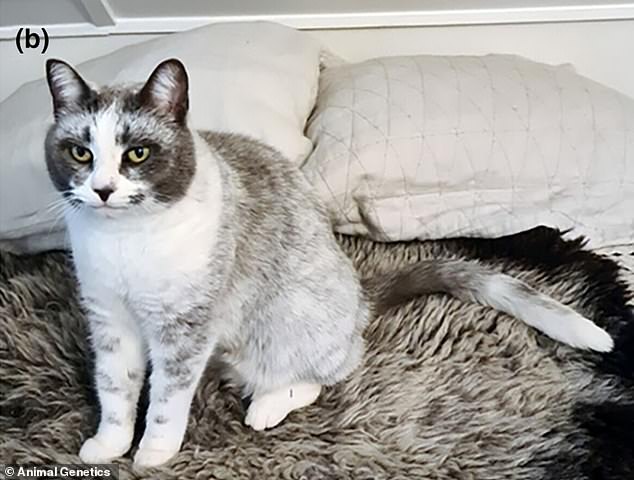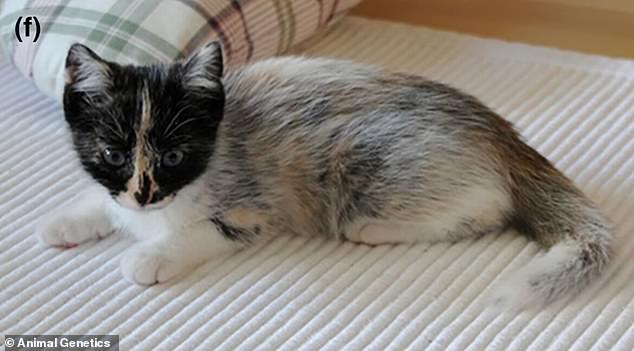Put moggies aside, the ‘salty licorice’ is here! A rare genetic mutation gives some cats a speckled coat – how do you know if your pet has it?
- Cats with a special black and white coat are nicknamed ‘salty licorice’
- Their hair gradually becomes whiter along the hair closer to the ends
Cats with an unusual black and white coat, nicknamed ‘salty licorice’, have been revealed to possess a genetic mutation previously unknown to science.
The cat’s coat, discovered in Finland, has a distinctive salt and pepper appearance.
The cause of the unusual appearance is that the cat’s coat in the spotted areas is colored only at the base, near the skin.
Their hair gradually becomes whiter along the hair closer to the ends.
Heidi Anderson of Mars Petcare Science & Diagnostics in Helsinki and colleagues nicknamed the new coat “salmiak,” after a salty licorice snack in Finland, where the cats were discovered.
Cats with an unusual black and white coat nicknamed ‘salty licorice’ have been revealed to possess a genetic mutation previously unknown to science

The cat’s coat, discovered in Finland, has a distinctive salt and pepper appearance
The unusual coat patterns were first noticed in three cats in a wild population in central Finland in 2007.
The moggies were described as having a black and white ‘tuxedo’ coloring – but with ‘an additional gradation of color’ on the hairs in the colored areas.
Researchers from the University of Helsinki used a national newspaper to look for cats with a similar pattern.
DNA was then sampled from four cats that met the criteria.
The researchers contacted Dr. Anderson, a specialist in cat DNA testing, to see if there was anything unusual in the cats’ genetics.

The unusual coat patterns were first noticed in three cats in a wild population in central Finland in 2007
Dr Anderson’s DNA research revealed that the cats had a ‘large chunk of DNA missing’ and this led to the unusual color effect.
Dr. Anderson said: “These jackets have been a source of admiration for years. It is very exciting that we now have a genetic explanation for it.’
Publishing the research in the journal Animal Genetics, Dr Anderson and colleagues wrote: ‘This sal ammoniac pattern of white hairs is most noticeable in solid black cats, but can occur in mixed color backgrounds including, for example, brown tabby, tortoiseshell and dilute . (blue) and in both male and female cats.’
The researchers added that sal ammoniac cats were thought to be infertile solely due to the rarity of the coat type in the cat population.
However, the authors said that “a recent observation of a sal ammoniac-colored cat that gave birth to four kittens refuted this belief.”

